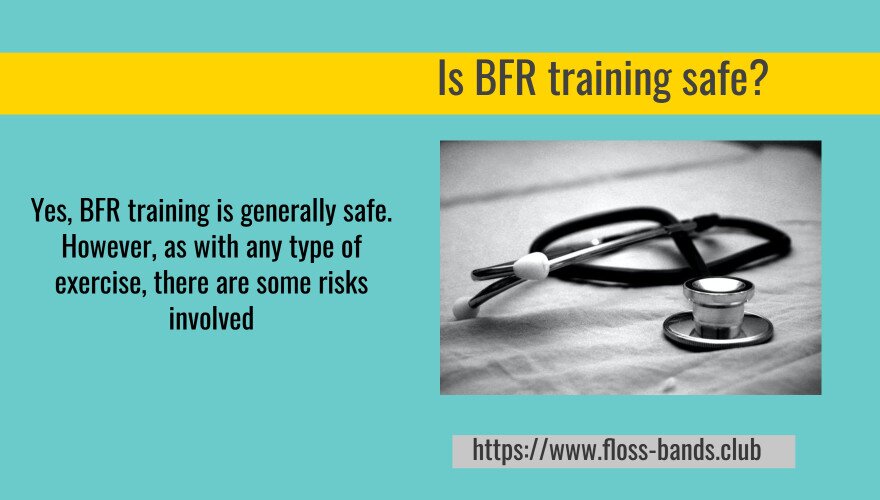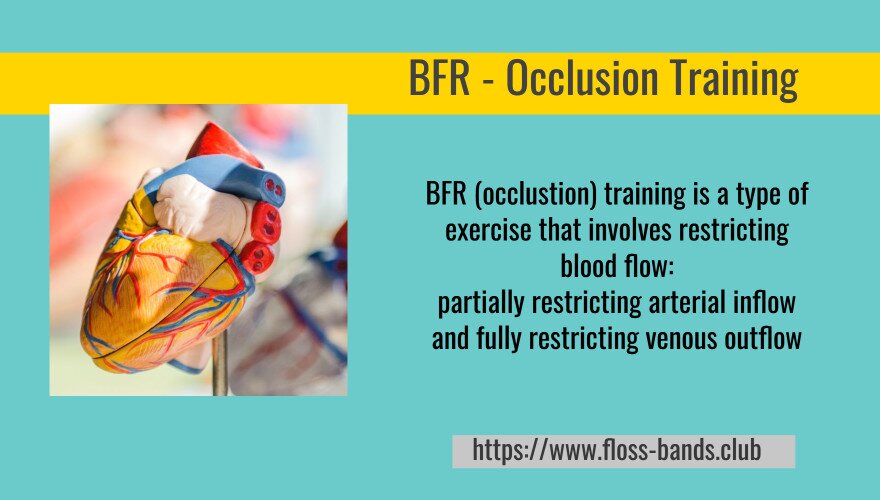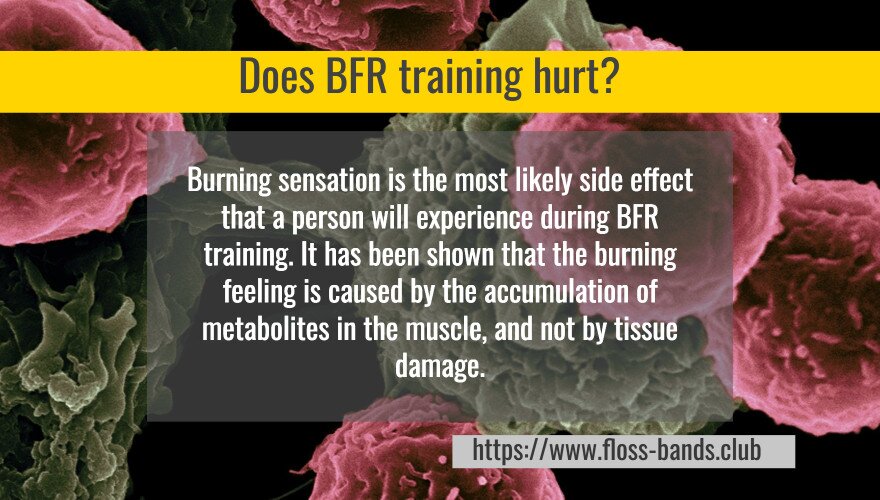BFR - a Smart Way to Get the Most of Your Body - Blood Flow Restriction 101
- ✅Does blood flow restriction training work?
- ✅Is BFR training safe?
- ✅How is blood flow restriction being used in exercise training?
- ✅When would you use blood flow restriction training?
- ✅How does blood flow restriction training work?
- ✅Can I do BFR training everyday?
- ✅Does BFR training cause blood clots?
- ✅Does BFR training hurt?
- ✅How tight should blood flow restriction bands be?
- ✅How long can blood flow be restricted?
- ✅Is blood flow restriction therapy safe?
- ✅Who can benefit from blood flow restriction training?
- ✅How does blood flow restriction therapy work?
- ✅What is low load blood flow restriction training (LL-BFR)?
- ✅Does BFR training increase strength?
- ✅How do you do blood flow restriction at home?
- ✅What is the purpose of BFR bands?
- ✅Does BFR increase vascularity?
- ✅Can you do BFR twice a day?
- ✅Why have a blood flow restriction?
- ✅How did blood flow restriction start?
✅Does blood flow restriction training work?
Most research indicates that blood flow restriction training is effective for muscle growth and strength gains. A 2018 systematic review and meta-analysis of 22 studies found that BFR training leads to significant increases in muscle size and strength, with the greatest benefits seen in those who are new to lifting weights.
Additionally, a 2019 study showed that BFR training can help improve muscle recovery after intense exercise, which may be beneficial for athletes and people who are new to working out.

✅Is BFR training safe?
BFR contraindications
Yes, BFR training is generally safe. However, as with any type of exercise, there are some risks involved. These include the potential for:
-
Muscle or nerve damage, existing nerve compression, or entrapment (tingling, numbness) in the area to be exercised
-
Excessive swelling
-
Skin injury, burns in the affected area
-
Blood clots
-
Thromboses and acute venous diseases, painful varicose veins or arterial occlusive diseases
-
Cancer (if danger of metastasis is present)
-
Heart failure (risk of volume overload)
-
Taking anticoagulants
Important:
When used in therapy, any potential hazards and contraindications must be discussed with a physician.
If you have any medical conditions that might be affected by BFR training, such as heart disease or high blood pressure, be sure to speak with your doctor before starting. Additionally, it's important to use proper form and technique when performing BFR exercises to minimize the risks of future injuries.
Also, the risks associated with BFR training are similar to those associated with any other type of physical activity, such as strains, sprains, and contusions. However, there is a potential for more serious risks, such as deep vein thrombosis (DVT), if the training is not performed correctly. Therefore, it is important to consult with a trained and certified professional before beginning any BFR training program.

✅How is blood flow restriction being used in exercise training?
Blood flow restriction (BFR) training is a type of exercise that involves restricting blood flow (partially restricting arterial inflow and fully restricting venous outflow) to the muscles being worked. This can be done using a tourniquet or other type of device, such as elastic bands. The idea behind BFR training is that it allows you to achieve a high level of muscle activity with lighter weights than you would normally use.
There is a strong scientific evidence to suggest that BFR training can be an effective way to build muscle and strength. However, more research is needed to confirm these benefits.

✅When would you use blood flow restriction training?
There are a number of reasons why someone might use BFR training. For example, it has been shown to be effective for:
-
Building muscle and strength
-
Improving recovery from workouts, reducing soreness
-
Enhancing bone density
-
Reducing fatigue during exercise
-
Helping with rehab after an injury
-
Reducing inflammation
-
Enhancing tissue repair, protein synthesis, collagen synthesis
BFR training can be used by people of all fitness levels, from those who are new to exercise to seasoned athletes. It can be performed with a variety of different exercises, including lifting weights, biking, walking, and running.
BFR training can also be used as a tool for rehabilitation, such as after an injury or surgery. Additionally, it has been shown to be effective for people who are unable to use heavy weights due to joint pain or other issues.

✅How does blood flow restriction training work?
How does BFR work?
BFR training works by restricting the amount of blood that flows to your muscles during exercise. This makes your muscles work harder, even though you may be using lighter weights than usual.
The tourniquet is applied to the working limb at a predetermined pressure, which occludes venous outflow but only partially the arterial inflow. This results in a hypoxic environment and an increase in metabolite concentrations (lactic acid) in the working muscles. The combination of these two stimuli increases muscle activation and subsequent strength gains.

✅Can I do BFR training everyday?
Strength training with BFR can be done daily in theory, however this may not be the most effective long-run option.
1-2 times per day is best to be done for a limited time periods of 3 weeks. Check our article on Kaatsu walk experiment.
Over-training when using BFR, as well as other conventional types of training should be avoided. Symptoms such as delayed onset muscle soreness (DOMS), decreased performance, and irritability are all common signs of overtraining.
If any of these symptoms occur, it is recommended to reduce the frequency or intensity of BFR training until they subside.
What happens when blood flow is restricted? In the occlusion training context, the working muscles are 'forced' to work harder because they do not have enough blood flow to remove metabolites effectively. Lactic acid builds up in the muscles and this causes fatigue and muscle pain (known as the burning sensation).
The aim of BFR training is to produce these conditions (i.e. force the muscles to work hard and produce lactic acid) without using heavy weights. This is done by restricting the blood flow to the working muscles with a tourniquet. The tourniquet is usually applied at the level of the biceps or quads.
The applied pressure should not be so high that it cuts off all blood flow (this is dangerous and can cause tissue damage). The ideal pressure is one that just occludes the venous return (i.e. the blood flowing back to the heart) but not the arterial inflow (i.e. the blood flowing into the muscles).
The build-up of lactate and hydrogen ions in hypoxic settings further increases the release of growth hormone.

✅Does BFR training cause blood clots?
BFR and blood clotting BFR training does not cause blood clots in healthy individuals. The incidence rate of suffering a venous thrombosis during BFR training is 0.06%, and this number is lower than the general population figure.

✅Does BFR training hurt?
Burning sensation is the most likely side effect that a person will experience during BFR training. It has been shown that the burning feeling is caused by the accumulation of metabolites in the muscle, and not by tissue damage.
Athletes should feel a tightness in the muscles when the tourniquet is applied, but this should not be painful. If the athlete experiences pain, they should immediately stop the exercise and remove the tourniquet.
Burning sensation is a natural response to BFR training, and is not dangerous. It is important to remember that the intensity of the burning feeling should be manageable and not excruciating.

✅How tight should blood flow restriction bands be?
How tight to wrap BFR bands
The ideal pressure is one that just occludes the venous return (i.e. the blood flowing back to the heart) but not the arterial inflow (i.e. the blood flowing into the muscles).
The applied pressure should not be so high that it cuts off all blood flow (this is dangerous and can cause tissue damage).
A good rule of thumb is to wrap the band around the limb so that it's 5-7 out of 10 in tightness, where 10 is as a maximum tightness.
You shouldn't feel any numbness or tingling once you've applied the strap.

✅How long can blood flow be restricted?
The duration of blood flow restriction is typically 4-5 sets that are 2 minutes long with 30-60 second rest periods in between. Then the bands, or cuffs are removed and active recovery is performed for 2-3 minutes.

✅Is blood flow restriction therapy safe?
BFR is considered a safe intervention when used properly. There are some risks associated with BFR, such as skin irritation, bruising, and discomfort. It is important to consult with a medical professional before starting any BFR program.

✅Who can benefit from blood flow restriction training?
Who is BFR good for?
Blood flow restriction training can help people recovering from an injury, surgery, or those who are seeking additional strength gains. It’s also beneficial for healthy individuals.
The main principle behind blood flow restriction training is that it allows you to safely train with a heavier load than you normally would be able to while still maintaining good form and preventing injury. This type of training is also effective for people who are looking to improve their endurance and cardio fitness.

✅How does blood flow restriction therapy work?
The goal of Blood Flow Restriction Therapy is to safely allow patients to make greater strength gains while lifting lighter loads. BFRT works by decreasing arterial blood flow to and occluding venous out-flow from working muscles with the aim of promoting muscle hypertrophy and preventing atrophy of muscles because of disuse or age.
Blood flow restriction therapy (BFRT) promotes the release of anabolic hormones and growth factors, which speeds up the healing process and muscles grow. Additionally, BFRT increases the level of hypoxia in muscles for a short period of time, which promotes the growth of new blood vessels.
BFRT can be used for people recovering from an injury, surgery, or those who are seeking additional strength gains. It is also beneficial for healthy individuals seeking to improve their endurance and cardio.

✅What is low load blood flow restriction training (LL-BFR)?
Low-load blood flow restriction training has gained increasing interest in the scientific and sports community because the increases in muscular mass and strength are comparable to standard high-load (HL) resistance training.
There are many ways to safely apply BFRT, but all methods have four common steps: 1) wrapping an inflatable tourniquet around the upper arm or thigh, 2) inflating the tourniquet to a predetermined pressure, 3) performing light-to-moderate intensity exercises with the wrapped limb, and 4) releasing the tourniquet and allowing blood to flow back into the limb.

✅Does BFR training increase strength?
Blood flow restriction (BFR) training has been shown to promote favorable changes in lean muscle mass and strength with a significantly low training load (20 – 30% 1RM).
A number of studies have investigated the efficacy of BFR training on different aspects of physical performance. The results of these studies suggest that BFR training can be an effective method for enhancing muscle size and strength.
One study found that BFR training was as effective as traditional high-load resistance training in terms of increasing strength and muscle size. The authors of this study concluded that BFR training is a viable alternative to traditional resistance training for people who are seeking to gain strength and muscle mass.
Another study found that BFR training was more effective than traditional resistance training in terms of increasing muscular endurance. The authors of this study concluded that BFR training could be a valuable tool for athletes who are seeking to improve their muscular endurance.
The results of these studies suggest that BFR training is an effective method for increasing strength and muscle mass.

✅How do you do blood flow restriction at home?
You can do blood flow restriction at home by wrapping a muscle flossing band or BFR straps around your upper arms or legs. This will restrict the flow of blood to your muscles and force them to work harder. You can also use special devices that are designed for blood flow restriction training, such as the BFR Bands or the Occlusion Training Bands. These devices are more comfortable to use and provide a more consistent level of restriction, which can help you get better results.

✅What is the purpose of BFR bands?
BFR bands are used to restrict the venous out-flow of blood from working muscles. This forces the muscles to work harder and fatigue faster with a lighter load, which can lead to increases in muscle size and strength.
Additionally, BFR training may results in releasing anabolic hormones and growth factors, which apart from muscle hypertrophy can help to speed up the healing process, and tissue repair.
BFR bands can be used for people recovering from an injury, surgery, or those who are seeking additional strength gains. They are also beneficial for healthy individuals seeking to improve their endurance and cardio fitness.

✅Does BFR increase vascularity?
There is evidence that BFR may help to increase vascularity, especially in hypoxic conditions. This occurs because BFR increases angiogenesis (the formation of new blood vessels). This is beneficial because it can improve tissue oxygenation and help to counteract the effects of hypoxia. Additionally, increasing vascularity can also help to improve nutrient and waste exchange within the tissue. This is important because it can help to promote healing and reduce the risk of tissue damage. Therefore, BFR may be a helpful tool to increase vascularity and improve tissue health.

✅Can you do BFR twice a day?
Doing BFR twice a day may actually be beneficial in certain situations.
For example, if you are rehabbing from an injury, doing BFR twice a day can help to speed up the healing process.
This is because using a load that is between 20 and 40 percent of the client's 1RM (one repetition maximum load) can help to improve tissue oxygenation, increase anabolic hormones, stimulate collagen synthesis and, and promote healing.
Additionally, increasing vascularity can also help to improve nutrient and waste exchange within the tissue, which is important for overall health.
However, it is important to note that this should only be done for up to three weeks.
Ultimately, it is important to consult with a doctor or physical therapist before starting any new exercise routine.

✅Why have a blood flow restriction?
Blood-flow restriction training can help patients to increase strength while lifting considerably lighter loads. This helps to reduce the overall stress placed on the bones and joints.
By properly applying a tourniquet-like device to the extremity being trained, trainers can safely reduce the amount of blood flow returning from the working muscle. Research has shown that this method of training can result in significant increases in both local and systemic anabolic hormones, such as testosterone, growth hormone, and insulin-like growth factor 1.
When used correctly, blood flow restriction training can be a very effective tool for improving both strength and hypertrophy.

✅How did blood flow restriction start?
The origin of BFR training - Kaatsu training
Dr. Yoshiaki Sato, a teenager attending a Buddhist festival in 1966, discovered it when he was 18 years old. He was kneeling when he first noticed that blood flow to his legs had been restricted, resulting in an excruciating buildup of pressure in his lower limb muscles.
This caused him to inquire into the consequences of restricted blood flow on muscles and, eventually, to the creation of BFR training.
BFR training has been utilized to prevent muscular atrophy in individuals who are unable to weight-bear during their recovery since the 1970s.
